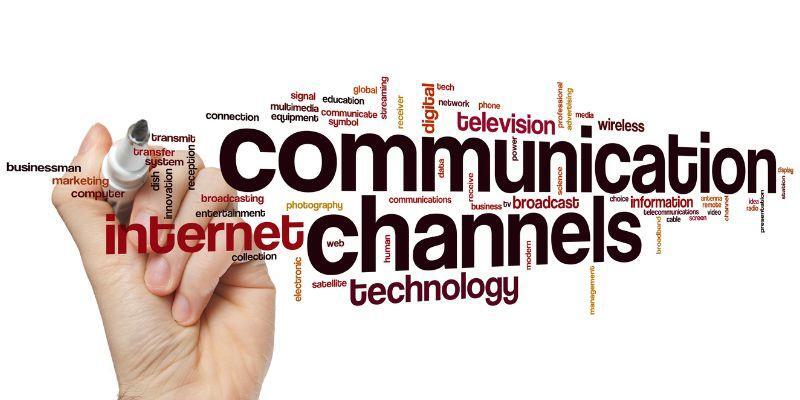Customer interaction management refers to the strategies and processes businesses use to oversee and improve every interaction with their customers. In today’s fast-paced business industry, managing these interactions effectively is crucial.
It helps companies build stronger relationships, address customer needs promptly, and maintain a positive brand image.
The key benefits of effective customer interaction management include improved customer satisfaction, increased loyalty, and higher retention rates.
When businesses manage customer interactions well, they can better understand customer preferences, leading to personalized experiences that forward long-term relationships.
Additionally, it helps streamline communication across various channels, ensuring a consistent and positive experience for every customer.
This article will explore various aspects of customer interaction management, its importance, and practical strategies for improving customer interactions and helping businesses thrive in a competitive market.
Types of Customer Interactions
Customer interaction management involves overseeing various types of client interactions across different channels. These interactions are crucial for building and maintaining solid relationships with customers. Here are the primary types of consumer interactions:
- Face-to-Face: The traditional and often most personal form of client interaction, allowing businesses to engage with customers and create trust directly.
- Phone: A widely used method to manage customer interactions that require immediate attention or detailed discussion, offering a personalized touch.
- Email: Ideal for formal communication, providing detailed information or confirmations, and following up on previous customer interactions.
- Chat: Online chat services, including live chat and messaging apps, enable businesses to resolve issues in real-time, making it easier to provide effective customer interaction services.
- Social Media: Platforms like Facebook, Twitter, and Instagram allow businesses to engage in public and private consumer interactions, increasing visibility and customer engagement.
Consistency across all these channels is vital in customer interaction management. Regardless of how customers interact, they should receive the same quality of service. Consistent customer interaction services can lead to clarity, frustration, and a negative brand perception.
A unified approach to customer interaction ensures a smooth experience, increasing customer satisfaction and loyalty. This consistency is critical to developing customer relations and ultimately contributes to the business’s success.
Strategies for Effective Customer Interaction Management

Effective customer interaction management strategies are essential for building strong relationships and ensuring customer satisfaction.
Below are key strategies to help businesses manage customer interactions and boost their customer service experience.
1. Develop a Customer-Centric Culture
To excel in customer interaction management, businesses must adopt a customer-centric culture. This means putting customers first in every aspect of the business.
Prioritizing the importance of customer interaction ensures that every decision and action taken by the company revolves around increasing customer satisfaction and loyalty.
It is crucial to provide employees with training and resources to deliver exceptional customer service. Employees should have the knowledge and tools to handle various client interactions effectively.
This includes training on communication skills, understanding customer needs, and using empathy during consumer interactions. When well-prepared, employees can offer superior customer interaction services that reflect the company’s commitment to customer satisfaction.
2. Streamline Communication Channels
One key element of effective customer interaction management is ensuring customers can easily reach you through their preferred channels.
Customers should have multiple options for interacting with your business, whether by phone, email, chat, or social media. This not only increases accessibility but also augments the overall customer experience.
Businesses should implement a centralized system for managing customer interactions to improve client interaction strategies further.
A centralized system allows for the efficient organization and tracking of all customer interaction services, ensuring no customer query or concern is overlooked. This helps maintain consistency and improve response times, which is vital for maintaining positive customer relations.
3. Personalize Interactions
Personalization is a powerful tool in customer interaction management. Businesses can tailor interactions to individual preferences and needs using customer data. Personalization makes customers feel valued and understood, strengthening their connection with the brand.
For example, recognizing a customer’s past purchases or preferences can lead to more meaningful and relevant client interactions.
Training employees on active listening and empathy is also essential in personalizing consumer interactions. Active listening ensures that customers feel heard, while empathy allows employees to connect with customers on an emotional level.
These skills are crucial for delivering personalized customer interaction services that resonate with customers and meet their unique needs, ensuring a pleasant customer experience.
4. Respond Promptly and Efficiently
In today’s fast-paced world, customers expect quick and efficient responses. Setting clear expectations for response times is vital in customer interaction management.
Whether through automated replies or clear communication guidelines, customers should know when to expect a response. This helps them manage their expectations and reduce frustration.
Enabling employees to resolve issues quickly and effectively is another critical aspect of managing customer interactions.
Employees should have the authority and resources to address customer concerns without delay. Quick issue resolution improves customer satisfaction and helps build trust and loyalty.
This approach ensures that every client interaction is handled efficiently and effectively, leading to better customer interaction solutions.
5. Gather and Act on Customer Feedback
Customer feedback is a valuable resource for improving customer interaction management. Implementing feedback mechanisms, such as surveys or feedback forms, allows businesses to collect customer insights. This feedback clearly explains customer needs, preferences, and pain points.
Using the feedback to improve products, services, and interaction processes is essential for continuous improvement. Businesses should analyze the feedback and implement necessary changes to boost customer interaction services.
By actively listening to customers and making adjustments based on their input, businesses can improve overall customer satisfaction and strengthen client interaction strategies.
This proactive approach to improving customer relations ensures that the company remains responsive to customer needs and committed to delivering exceptional service.
Components of Effective Customer Interaction Management

Effective customer interaction management (CIM) is built on several critical components that work together to improve the customer experience. Below are the key components businesses must focus on to ensure successful CIM.
1. Communication Channels
Leveraging various communication channels is essential for engaging effectively with customers. Businesses must offer multiple ways for customers to reach them, ensuring convenience and accessibility. This includes both traditional methods and digital platforms:
- Traditional Methods: Phone and in-person interactions remain vital for direct, personalized communication.
- Digital Platforms: Email, social media, and live chat offer instant, convenient ways for customers to connect with businesses.
For example, a retail store may utilize different communication channels to serve customers effectively. They might offer in-store assistance (face-to-face), a customer service hotline (phone), and a live chat feature on their website for immediate online support.
Additionally, they could engage with customers on social media by responding to inquiries and resolving issues in real time. By employing a mix of communication channels, the retail store can cater to diverse customer preferences, ensuring a seamless and positive shopping experience.
2. Data Analysis
Data plays a crucial role in customer interaction management, enabling businesses to gain deep insights into customer preferences, behavior patterns, and pain points. By analyzing data, companies can better understand their customers and tailor their services accordingly.
For instance, an e-commerce company can use data analysis to personalize each customer’s shopping experience. By tracking browsing history and purchase patterns, the company can recommend products that align with the customer’s interests.
Additionally, data analysis allows the company to offer proactive customer support by identifying potential issues before they escalate.
For example, if a customer frequently abandons their cart, the company might send a reminder or offer a discount to encourage completion of the purchase.
Furthermore, predictive analytics can anticipate customer needs and mitigate churn risks. Businesses can predict when customers might be dissatisfied or likely to leave by analyzing past interactions and behaviors.
This allows them to take proactive steps to retain customers, such as offering targeted promotions or improving service.
3. Feedback Mechanisms
Actively soliciting and acting on customer feedback is vital for continuous improvement in customer interaction management. Feedback mechanisms provide valuable insights into customer satisfaction and areas that need improvement.
For example, a hotel might use post-stay surveys to gather guest feedback. These surveys can ask about various aspects of the guest experience, such as room cleanliness, staff friendliness, and the quality of amenities.
By analyzing the feedback, the hotel can identify areas for improvement and make changes to improve the guest experience, such as upgrading facilities or providing additional staff training.
In addition to surveys, social media monitoring and engagement are crucial for addressing customer concerns in real time. Customers often share their experiences and opinions on platforms like Twitter or Facebook, and businesses can use these platforms to interact with customers directly.
By promptly responding to complaints or acknowledging positive feedback, companies can demonstrate their commitment to customer satisfaction and improve their overall reputation.
Communication channels, data analysis, and feedback mechanisms are the backbone of effective customer interaction management. When integrated effectively, they enable businesses to build stronger customer relationships, improve satisfaction, and drive long-term success.
Benefits of Effective Customer Interaction Management
Effective customer interaction management (CIM) offers numerous advantages that can significantly impact a business’s success. By focusing on the quality of customer interactions, businesses can reap several key benefits, outlined below.
1. Improved Customer Satisfaction
Delivering personalized and efficient interactions is a cornerstone of customer interaction management. When businesses tailor their services to meet each customer’s unique needs and preferences, satisfaction levels naturally increase.
Personalization makes customers feel valued and understood, which leads to a more positive experience.
Satisfied customers are more likely to remain loyal and engage with the business on a deeper level. They are more inclined to return for future purchases, leave positive reviews, and recommend the company to others.
High customer satisfaction also reduces the likelihood of complaints and negative feedback, creating a more harmonious relationship between the business and its customers.
2. Increased Customer Loyalty
Effective customer interaction management nurtures strong relationships between customers and the business. Customers’ loyalty to the brand grows When they feel consistently well-served and appreciated.
This loyalty is built over time through positive interactions and reliable service, which makes customers more likely to stick with the business, even when competitors offer similar products or services.
Loyal customers are also less price-sensitive and more likely to become advocates for the brand. They tend to overlook minor price differences in favor of their trust and familiarity with the brand.
These customers continue to make repeat purchases and actively promote the business through word-of-mouth, further developing the company’s reputation and reach.
3. Enhanced Brand Reputation
Delivering exceptional customer experiences through effective customer interaction management significantly improves a business’s reputation.
When customers consistently have positive experiences, they associate the brand with quality, reliability, and excellent service. This strong reputation becomes valuable, setting the business apart from competitors.
A strong brand reputation attracts new customers while helping retain existing ones. People are likelier to choose a brand that others speak highly of, and satisfied customers are more likely to remain loyal when they believe they are dealing with a reputable company.
This excellent reputation also provides a buffer during times of crisis or when facing market challenges, as customers are more likely to stand by a brand they trust, which impacts the customer journey as well.
4. Reduced Customer Churn
Proactive and responsive customer interaction management is crucial in addressing customer concerns before they escalate to churn. By identifying and resolving issues quickly, businesses can prevent dissatisfaction from leading to customer loss.
Regular communication and personalized follow-ups also help keep customers engaged and satisfied, reducing the likelihood of them leaving for a competitor.
Retaining existing customers is more cost-effective than acquiring new ones. The costs associated with marketing, advertising, and onboarding new customers are significantly higher than those required to maintain existing relationships.
Therefore, by reducing churn through effective CIM, businesses can save on costs and maintain a steady revenue stream from loyal customers.
5. Improved Operational Efficiency
Effective customer interaction management involves streamlining communication channels and leveraging data-driven insights to optimize internal processes.
Using centralized systems to manage all customer interactions, businesses can reduce redundancy and ensure customer inquiries are handled efficiently and consistently.
Efficient operations lead to cost savings and better resource allocation. With a well-organized CIM strategy, businesses can reduce the time and effort required to resolve customer issues, allowing employees to focus on higher-value tasks.
This improves the overall customer experience and the business’s ability to scale and adapt to changing demands.
6. Increased Revenue and Profitability
Satisfied and loyal customers are more likely to make repeat purchases and referrals, directly contributing to increased revenue.
When customers have positive experiences, they are more inclined to spend more and continue doing business with the company over time. Additionally, word-of-mouth referrals from loyal customers can bring in new business without extensive marketing efforts.
Effective customer interaction management contributes to overall business growth and profitability. By building strong customer relationships, businesses can create a stable and growing customer base that supports long-term success.
Reduced churn, increased customer loyalty, and improved operational efficiency ultimately lead to higher profitability and a stronger market position.
These benefits underscore the importance of investing in effective customer interaction management strategies. By prioritizing customer satisfaction and leveraging effective CIM practices, businesses can achieve sustainable growth and maintain a competitive edge in the marketplace.
Tools and Technologies for Customer Interaction Management

In today’s digital age, managing customer interactions effectively requires various customer service tools and technologies to streamline and improve the process. These tools help businesses manage customer interactions more efficiently and improve the overall customer experience.
One of the most critical tools in customer interaction management is Customer Relationship Management (CRM) software. CRM systems are a centralized platform where businesses can store and manage customer data, track interactions, and analyze customer behavior.
By integrating all customer-related information into one system, CRMs enable businesses to provide personalized and consistent service across all channels.
This technology plays a vital role in building a comprehensive understanding of each customer, allowing businesses to create effective strategies for enhancing customer relations.
Furthermore, CRM software often includes features for automating tasks such as follow-ups and marketing campaigns, which helps nurture leads through the sales funnel. (For more on creating an effective sales funnel, click here)
Beyond CRM software, several other tools and technologies can significantly boost customer interaction management:
- Chatbots: These AI-powered tools can engage with customers in real time, providing instant responses to common queries. Chatbots are particularly useful for handling large volumes of inquiries simultaneously, ensuring that customers receive timely assistance even during peak hours. They can be integrated into websites, social media platforms, and messaging apps to offer 24/7 support.
- Knowledge Bases: A knowledge base is an online repository of information that customers can access to find answers to their questions independently. This tool reduces the burden on customer service teams by enabling customers to solve their problems without direct interaction. Well-organized knowledge bases can improve the efficiency of customer interaction services by providing customers with quick and easy access to information.
- Self-Service Portals: Similar to knowledge bases, self-service portals allow customers to manage their accounts, access resources, and perform specific actions (like tracking orders or making payments) independently. These portals authorize customers by giving them control over their interactions with the company, leading to a more satisfying experience.
- Social Media Monitoring Tools: These tools help businesses track and respond to customer interactions on social media platforms. By monitoring mentions, comments, and messages, companies can engage with customers in real-time and address any issues or concerns promptly. This proactive approach is crucial for maintaining a positive brand image and creating stronger customer relationships.
- Analytics Platforms: Data analytics platforms are essential for analyzing customer behavior and interactions. These tools provide insights into customer preferences, trends, and pain points, enabling businesses to make informed decisions about improving client interaction strategies. Predictive analytics, in particular, can help businesses anticipate customer needs and take proactive measures to prevent issues before they arise.
By leveraging these tools and technologies, businesses can create a more efficient, responsive, and personalized approach to customer interaction management.
This improves the customer experience and contributes to long-term customer loyalty and business growth. Integrating these tools into a cohesive strategy allows companies to stay ahead of the competition by consistently delivering high-quality customer interaction solutions.
Case Studies and Examples
Real-world examples demonstrate the effectiveness of Customer Interaction Management strategies across different industries.
Zappos: Personalized and Proactive Support
Zappos is renowned for its exceptional customer service, which is deeply rooted in its customer interaction management approach. The company focuses on personalized communication and proactive support, ensuring customers feel valued and understood.
This strategy has led to high customer satisfaction and loyalty levels, making Zappos a leader in customer-centric business practices.
Starbucks: Data-Driven Customer Interaction
Starbucks leverages data analytics to personalize customer interactions, tailor offers, and increase customer engagement across all platforms.
From customized promotions to responsive social media interactions, Starbucks’ Customer Interaction Management strategy ensures a consistent and delightful customer experience, contributing to the brand’s strong customer loyalty.
Wavetec Case Studies
Our company, Wavetec, has also implemented successful Customer Interaction Management strategies that have significantly improved customer satisfaction and loyalty.
1. Al Rajhi Bank: Queue Management System
Wavetec provided Al Rajhi Bank with a comprehensive queue management system that smooths and aligns customer flow and improves service efficiency. This system allowed the bank to manage customer interactions more effectively, resulting in higher customer satisfaction.
2. Dubai Airports: Digital Signage and Customer Feedback Solutions
For Dubai Airports, Wavetec implemented digital signage and customer feedback solutions that enhanced communication and provided real-time insights. These tools helped manage customer interactions more efficiently, improving the passenger experience.
Customer Interaction Management – FAQs
What are the 5 steps of customer interactions?
The five steps typically include initiating contact, understanding customer needs, providing solutions or assistance, confirming customer satisfaction, and following up to ensure continued satisfaction.
What is the difference between CRM and CIM?
CRM (Customer Relationship Management) focuses on managing customer data and relationships over time, while CIM (Customer Interaction Management) specifically targets managing and optimizing every interaction between a business and its customers.
What is meant by customer-managed interactions?
Customer-managed interactions refer to situations where customers control their interactions with a company, often through self-service tools like online portals, allowing them to manage their accounts or find information independently.
What is the difference between PIM and CIM?
PIM (Product Information Management) manages product data and information across different channels, while CIM (Customer Interaction Management) focuses on managing and optimizing customer interactions across various touchpoints.
How do you work to improve your customer interactions?
Improving customer interactions involves personalizing communication, training staff in customer service, streamlining communication channels, and actively seeking and acting on customer feedback.
What makes a positive customer interaction?
Positive customer interaction is characterized by prompt, personalized, and effective communication that resolves the customer’s issue or meets their needs, leaving them satisfied and valued.
Conclusion
Customer Interaction Management is essential for businesses to build solid and lasting customer relationships.
By focusing on critical components such as utilizing diverse communication channels, leveraging data analysis, and implementing effective feedback mechanisms, companies can add to customer satisfaction, loyalty, and overall brand reputation.
Adopting a comprehensive customer interaction management strategy is beneficial and necessary in today’s competitive market. It allows businesses to provide personalized, efficient, consistent service across all touchpoints, ultimately increasing customer retention and profitability.
We encourage all businesses to prioritize customer interaction management to ensure they meet and exceed customer expectations, enabling long-term success and growth.
BOOK A FREE DEMO





